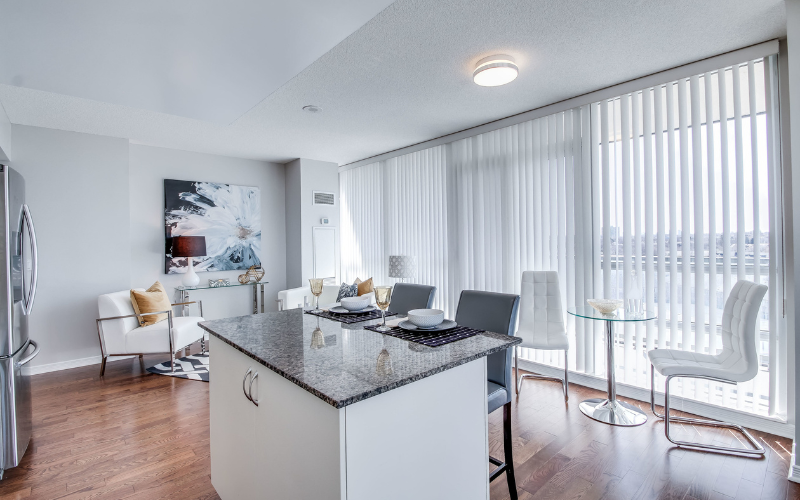Where are all of the homes for sale?
In 2012, you could find a for-sale or foreclosure sign on almost every home.
Houses sat for sale for months. Every once in awhile the home would get listed by a new real estate agent.
Now, you can hardly find a home for sale.
When you do find a home you like, you often call or text a real estate agent, only to learn that it sold yesterday. You’re always a day late and a dollar short.
Welcome to a seller’s market. Come one. Come all. Open your eyes and see the beast of this market. The brutal reality of trying to buy a home in this market.
Watch as a home flies off the market faster than lightning. Here one moment, gone the next. Come watch as the price of a home climbs higher and higher. To near death defying heights.
A seller’s market is known to be unforgiving and relentless to a home buyer. The wrong move could cost you for years.
For example, consider all of the people who bought a home in 2006 to 2008. They bought at the top of the market, and when prices came tumbling down, it wasn’t good. They were either among the many that lost their home.
If by some chance they were able ride out the storm, there is still little equity in their home, even after home values have recovered. Meaning, they’re trapped nearly a decade later.
In this article, we’re going to look at the top five challenges a home buyer faces during a seller’s market and how you can overcome these challenges.
Let’s go.
Challenge #1: Not Enough Homes For Sale
House hunters will need to pound much more pavement to find their dream home.
The inventory of homes for sale is at an all-time low, according to the National Association of Realtors. There were just 1.45 million homes for sale at the end of 2017, which at the current sales rate would take about 3.9 months to exhaust.
A normal, balanced market is about six months.
The situation looks far more dire for home buyers searching in my local market, Lansing. Our market is seeing an absorption rate around 2 to 3 months.

This graph shows a month-by-month rate of absorption.
The fact remains: there aren’t enough homes for home buyers to look at. Rather than having a list of 50 homes that match their criteria, there are only 12.
Home buyers are forced to pick a home from a smaller and smaller selection. There is an increased chance that they will have to make sacrifices or wait months to find their dream home.
Many experts believe the only thing missing in this market are the sellers. There is huge demand right now from home buyers. The solution? Wait? Wait until they show up?
I prefer an active approach. If you want to find your next home and have a wider selection of homes that match your criteria, then we have to drum up our own homes for sale.
One way to do that is to send letters to a neighborhood you want to live in.
Here’s how it works.
First, find a neighborhood you want to live in. Get as granular as possible. You want to have more than 50 homes but not more than 200.
Next, write a letter asking if any of these homeowners want to sell their home. Here is an example letter that I’ve used in the past.
“Dear [Homeowner name],
I was driving in your neighborhood last week when I had to come to a stop. I saw your home and thought to myself, I wonder if that owner has any interest in selling…
So as soon as I got home, I did some research to make sure the home would be a good enough fit for me and I believe it will be.
Of course, I still need to check out your home on the inside, but everything else looks great so far.
I’m curious, do you have any interest in selling your home?
If so, you can reach me on my cell phone at xxx-xxx-xxxx.
Thanks,
NameP.S. I am pre-approved with a lender and am very serious about buying your home.
A few tips to make this most successful. It’s best to hand-write everything. From the letter to the envelope. It’s also a good idea to use a real stamp rather than some kind of bulk stamp.
That’s why you need to keep the list small. Doing this level of personalization for 500 homes would be difficult.
Drumming up your own homes for sale is one way to overcome the challenge of not enough homes for sale.
Challenge #2: Too Many Buyers At the Same Home
There will be bloodshed. Just kidding. If there is, it’s likely to be a papercut.
There will be a lot of frustration, though, and probably tears. It’s almost impossible when you’re staring down the barrel of a multiple offer situation. Your emotions will run high.
The low inventory causes multiple buyers to write offers on the same home. This creates a situation for bidding wars and highest-and-best. Both of which drive up the price of a home.
A bidding war is when multiple parties compete for a home by continuing to increase the offer price of a home. Really nobody wins during a bidding war. The buyer whose bid is accepted often made an offer that is far higher than the house is worth.
The loser, well…
… they lost out on the home. But maybe they’re really the winner.
The only way to win is to not play at all. Instead, you need to play a different game. It’s better to look at homes where there are no buyers. This way, when it comes time to write an offer, you’re the only one.
There are two places I like to look for these kinds of homes.
First, for-sale-by-owners. These are homeowners who have decided to sell their home without a real estate agent.
Most real estate agents hate them, so they redirect their clients somewhere else. Plus, many home buyers don’t know enough or how to find them.
As a result, far fewer people investigate them or check them out.
To find a for-sale-by-owner, the best tool is Zillow. You can search for a for-sale-by-owner by filtering out all of the homes listed by an agent, in foreclosure, and sold. Make sure, “By Owner” is the only box checked.

The other place I tell buyers to look is right in your favorite home search application — Zillow, Realtor.com, or the MLS.
But, I recommend a new approach to looking at the homes.
Instead of scrolling past and ignoring the “ugly listings”, only look at those. Take all of the picturesque homes and shove ‘em.
You probably know the “ugly listings” I’m talking about.
There are either no photos, the lighting is terrible, there is hardly any description. Many of us are tempted to skip them and we do.
Sure, some of them are crappy. However, there are plenty of agents who are listing great homes, but they do a poor job marketing it.
Desperate to save money, the real estate agent takes photos with their phone and then uploads them. They have no photoshop ability nor a basic understanding of how to take quality photos, framing, and focal points.
When it comes to writing a description, they barely write anything; holding to the belief that they aren’t “writers”.
I dive into depth about these kinds of strategies in my book, “The High Real Estate Market: How to Buy Your Dream Home Without Busting Your Budget or Losing It.”
I reveal strategies for beating the TONS of other house hunters glued to Zillow by being the first one to know about a home for sale. For example, you will discover how to tap directly into the system real estate agents use so you can know about a home before anyone else.
Challenge #3: Risk Overpaying
During a hot seller’s market, we reach a critical point where the value of a home begins to reflect not the existing market conditions, but rather the anticipated growth to come. People begin buying houses based on a future market rather than the current one.
Your risk for overpaying increases. What happens if you pay for a home based on a future market that never occurs?
You will find yourself in a precarious position. You’re likely to be underwater on your home, where you owe more than your home is worth.
This negative equity position will hurt you when the market goes down. It will make it tough for you to sell and you may be stuck in your home.
To build up equity and keep yourself in a good position, you have to avoid paying for a home based on it’s future value. You want to look at what it’s worth today and only today.
Challenge #4: Selling And Buying At The Same Time
It’s best to limit your contingencies if you want your offer to get accepted in a seller’s market. Writing an offer that is dependent on your ability to sell your current home will likely get your offer rejected.
I mean, a seller is going to accept the offer with the highest price and the fewest contingencies because it represents less risk.
However, writing an offer on a home without your home being sold, could leave you on the hook with two homes (and mortgages). Waiting until your home sold, on the other hand, could leave you homeless.
It’s safer to write an offer with a contingency, but this means you need to improve your offer through other terms. It’s a good strategy to look at how to maximize the seller’s net profit.
An ideal offer would be a higher offer price with few expenses to the seller — either in concessions or repair costs.
You can also look at increasing the earnest money deposit, speed up the closing date, and even make sure that you’re working with the right real estate agent. The agent you work with can sometimes make the difference in whether an offer is accepted or not.
Challenge #5: Over Confident Sellers
It’s easy for some homeowners to feel like their home will sell no matter what. And to be honest, they are half right.
You will experience many types of sellers in this market. Some will ask far more than their home is worth. Others will be unreasonable when it comes to the kind of offer they will accept. And some will present their home in a less than flattering manner — piles of laundry, messy, cluttered rooms, and repairs needing to be done.
It will be tough to overcome your bias of disgust and worry. If you can get past all of it, you may find yourself a good deal.
At times, the overconfidence of a seller can be frustrating. Half of succeeding in this market can sometimes be a mental game.
There you have it. Those are the five challenges that a home buyer will face in a seller’s market. I have given you some solutions for drumming up your own homes for sale and circumventing the competition so you can be the only one to write an offer.
If you want more, and to go in depth, you can get my book “The High Real Estate Market”. I reveal strategies for getting your offer accepted even when you can’t be the highest priced offer. You will learn how to avoid bidding wars by using little-known strategies for circumventing the competition. And so much more.
To get a copy of my book, click here.




